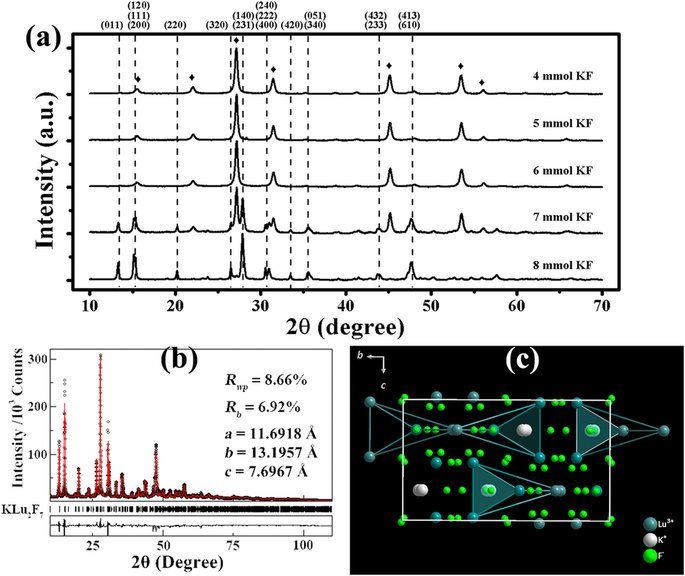Nice find on nanoparticles and energy transfer — important in scalable devices, energy conservation, etc.
The development, design and the performance evaluation of rare-earth doped host materials is important for further optical investigation and industrial applications. Herein, we successfully fabricate KLu2F7 upconversion nanoparticles (UCNPs) through hydrothermal synthesis by controlling the fluorine-to-lanthanide-ion molar ratio. The structural and morphological results show that the samples are orthorhombic-phase hexagonal-prisms UCNPs, with average side length of 80 nm and average thickness of 110 nm. The reaction time dependent crystal growth experiment suggests that the phase transformation is a thermo-dynamical process and the increasing F−/Ln3+ ratio favors the formation of the thermo-dynamical stable phase — orthorhombic KLu2F7 structure. The upconversion luminescence (UCL) spectra display that the orthorhombic KLu2F7:Yb/Er UCNPs present stronger UCL as much as 280-fold than their cubic counterparts. The UCNPS also display better UCL performance compared with the popular hexagonal-phase NaREF4 (RE = Y, Gd). Our mechanistic investigation, including Judd-Ofelt analysis and time decay behaviors, suggests that the lanthanide tetrad clusters structure at sublattice level accounts for the saturated luminescence and highly efficient UCL in KLu2F7:Yb/Er UCNPs. Our research demonstrates that the orthorhombic KLu2F7 is a promising host material for UCL and can find potential applications in lasing, photovoltaics and biolabeling techniques.
